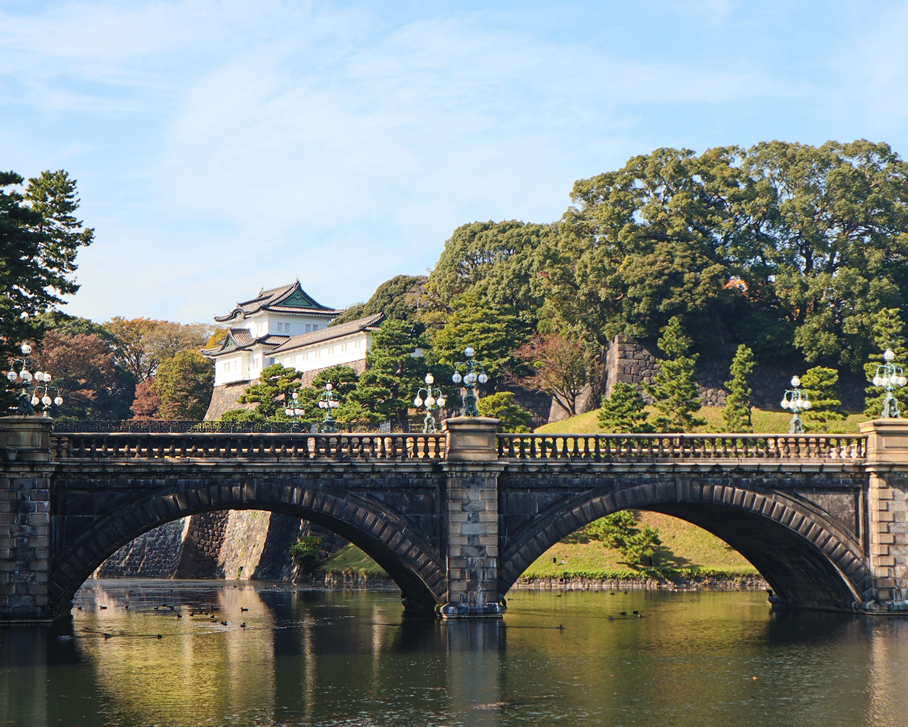Imperial Palace
The Imperial Palace occupies the site of the original Edo-jō, the Tokugawa shogunate’s castle. In its heyday, this was the largest fortress in the world, though little remains today apart from the moat and stone walls. Most of the 3.4 sq km complex is off limits, as this is the emperor’s home, but join one of the free tours organized by the Imperial Household Agency to see a small part of the inner compound. Surrounding the palace is Kōkyo-gain, a 115-hectare national garden, which includes public green spaces, moats, and museums. The pretty East Gardens are open to the public all year round and can be entered without a guide.
History
In its heyday, Edo-jō was the largest fortress in the world. When the shogunate fell, and the emperor moved to Tokyo, the castle became the imperial residence – Kōkyo. Much of it was destroyed by fires in 1873, and construction on a new palace was finished in 1888.
WWII air raids leveled most of the palace, and the current ferro-concrete buildings in Japanese modernist style were completed in the 1960s. The central tower, which contains the throne room, Matsu-no-Ma (Pine Chamber), is called the Kyūden. The low-slung structure is surprisingly modest – at least from what can be seen on public tours.
The moats and imposing stone walls visible around the perimeter of the palace grounds belonged to the original castle.
Touring the palace
Tours (lasting around 1¼ hours) run at 10am and 1.30pm usually on Tuesday to Saturday, but not on public holidays or mornings from late July through to the end of August. They’re also not held at all from 28 December to 4 January or when Imperial Court functions are scheduled. Arrive no later than 10 minutes before the scheduled departure time at Kikyō-mon, the starting and ending point.
Reservations are taken – via the website, phone or by post – up to a month in advance (and no later than four days in advance via the website). Alternatively, go to the office at Kikyō-mon (open 8.45am until noon and 1pm to 5pm) where you can book for a tour up to seven days in advance; if there is space available on that day’s tours, you’ll be able to register. Bring photo ID.
The tour will take you past the present palace (Kyūden), a modest low-rise building completed in 1968 that replaced the one built in 1888, which was largely destroyed during WWII. Explanations are given only in Japanese; download the free app (www.kunaicho.go.jp/e-event/app.html) for explanations in English, Chinese, Korean, French or Spanish.
If you’re not on the tour, head to the southwest corner of Kōkyo-gaien Plaza to view two bridges – the iron Nijū-bashi and the stone Megane-bashi. Behind the bridges rises the Edo-era Fushimi-yagura watchtower.
The main park of the verdant palace grounds is the Imperial Palace East Garden, which is open to the public for free without reservations, though entry numbers are limited. You must take a token upon arrival and return it at the end of your visit.

